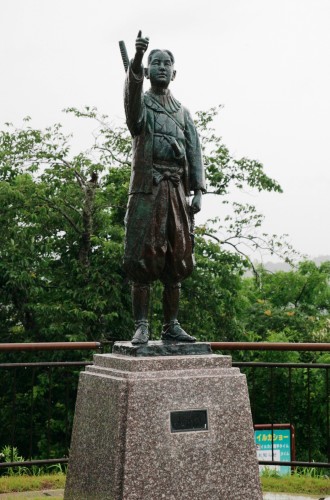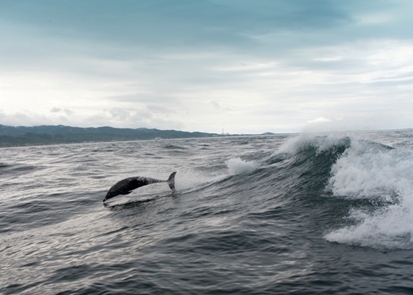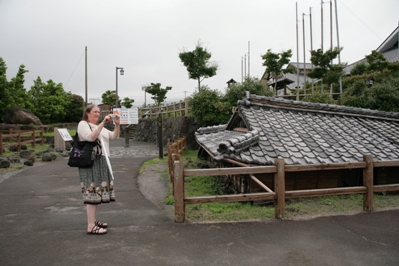| Ken and Bill's Excellent Adventure |
| X. Amakusa-Shimabara |
 Statue of 16-year-old Christian mystic Amakusa Shiro Tokisada at the Hidden Christian Museum. (SA) |
From Yatsushiro, an hour’s ferry boat ride took us to Amakusa, a group of 120 islands (only six of which are inhabited) off the Kyushu mainland and part of Kumamoto Prefecture. There we visited the newly renovated Christian Museum. Portuguese Jesuits had brought Christianity to Amakusa and neighboring Shimabara in 1566, and the religion had spread rapidly among the peasantry. Indeed, by 1637, the Tokugawa Shogunate saw it as a threat, expelled the Europeans, and outlawed Christianity. Led by a 16-year-old mystic, Amakusa Shiro Tokisada, the peasants rose in rebellion, but were defeated after 123 days. Some 37,000 Christians were killed in the final battle or slaughtered in its aftermath, and the survivors, who came to be known as the Hidden Christians, had to disguise and practice their religion in secret and at great peril. Not until 1873 was the ban on Christianity lifted. The museum contains such items as Buddhas that are actually Madonna and Child, Buddhas that have crosses etched into their backs and are thus not visible from the front, and ceramic images of Jesus and Mary that shogunate authorities would make people step on to prove they weren’t Christians (many refused and were summarily executed). |
| Christians are no longer persecuted in Japan, but Japan gets a lot of bad press for killing and eating dolphins. The fishermen of Amakusa and Shimabara (in Nagasaki Prefecture), however, have learned that there’s more to be made by watching dolphins than by catching them, and many have converted their fishing boats into tour boats. The day we went out into Hayasaki Strait between Amakusa and Shimabara, we were joined by dozens of other dolphin-watching boats and anywhere from 50 to 200 zooming, leaping, surfing, cavorting dolphins (I gave up trying to count). The sea was rough that day, with large swells coming from multiple directions, but our skipper worked his small boat with a consummate skill that bespoke years of experience on the water. |
 Dolphin-watching in Hayasaki Strait. (SA) | ||
 Anne at Unzen Volcanic Area Global Geopark. It is easy to see here how deep the debris field was that buried this and ten other homes in 1992. (SA) |
Equally interesting—and as chilling as the dolphins had been uplifting—was Shimabara’s Unzen Volcanic Area Global Geopark, built amid the ruins of the 1990 eruption of Fugendake, which killed 43 people, and its aftermath. In Memorial Park are the remains of eleven houses crushed, mutilated, invaded, buried, or partially buried by a subsequent 1992 landslide, left exactly as they were when a debris field from the volcano destroyed them. In the nearby museum, you can experience a multi-media recreation of what the eruption would have been like using Imax-style visuals, motion, sound, heat, and smell. |
| (Background photo by SA) | Continue to next section |